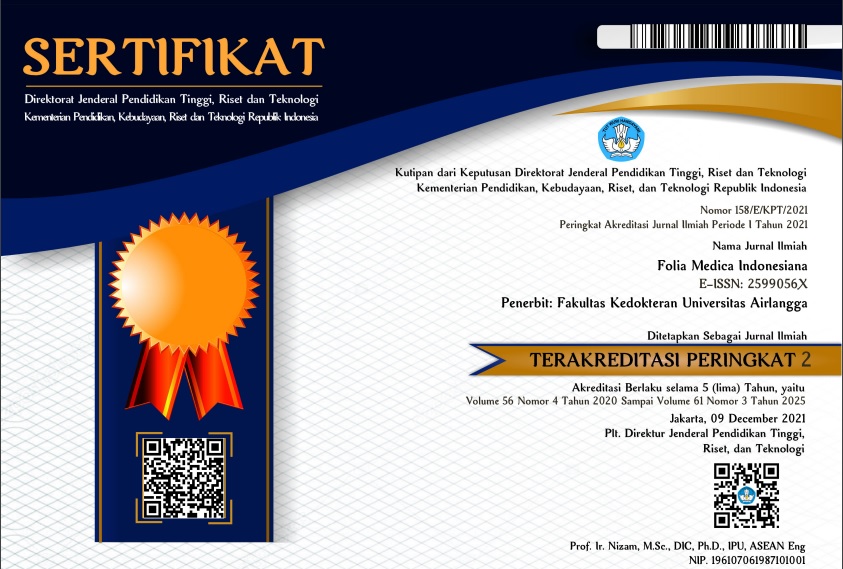ORCID ID
Mas Amaliyah: https://orcid.org/0000-0001-5469-8326, Noeroel Widajati: https://orcid.org/0000-0002-9609-8668
Abstract
A safety sign is a sign of equipment to provide protection for workers or visitors in the workplace. American National Standards Institute Z535 (ANSI Z535) is used as a basic guideline for installing safety signs in the workplace because it is more communicative by using global symbols to overcome language barriers. Occupational Safety Division of Manpower and Transmigration Departement, East Java Province (UPT Keselamatan Kerja Surabaya) is a workplace that has a risk of occupational accidents. The preliminary surveys in the area of the 3rd floor of the Division of Occupational Safety (UPT Keselamatan Kerja) Surabaya revealed that there were many sites with insufficient safety signboards. Many of the installed safety signs did not comply with ANZI Z535 standards. This study aimed to evaluate the installation of safety signs compared to the ANZI Z535 standard on the 3rd floor of UPT K2 Surabaya. This was an observational study examining the installation of safety signs. The data were obtained using the ANSI Z535 safety sign checklist. We found 2 out of 5 types of safety signs were in accordance with ANSI safety sign standards with a comparison percentage of more than 66%, such as the notice sign (67.85%) and safety condition sign (75%). Three other types of safety signs were in the unfavorable category with a percentage of less than 66%, such as danger sign (65.63%), warning sign (50%), and caution sign (46.88%). Some sites required additional safety signs, such as warning signs (at distillation site), caution signs (oven, stairs), notice signs (cylinder storage, elevator, chemical warehouse), and safety condition signs (stair, eyewash).
Keywords
Safety signboard, ANSI Z535 standard, laboratory, public health
First Page
231
Last Page
238
DOI
10.20473/fmi.v57i3.25293
Publication Date
9-5-2021
Recommended Citation
Amaliyah, Mas and Widajati, Noeroel
(2021)
"Evaluation of ANSI Z535 Safety Sign Installation,"
Folia Medica Indonesiana: Vol. 57:
No.
3, Article 10.
DOI: 10.20473/fmi.v57i3.25293
Available at:
https://scholarly.unair.ac.id/fk-fmi/vol57/iss3/10






